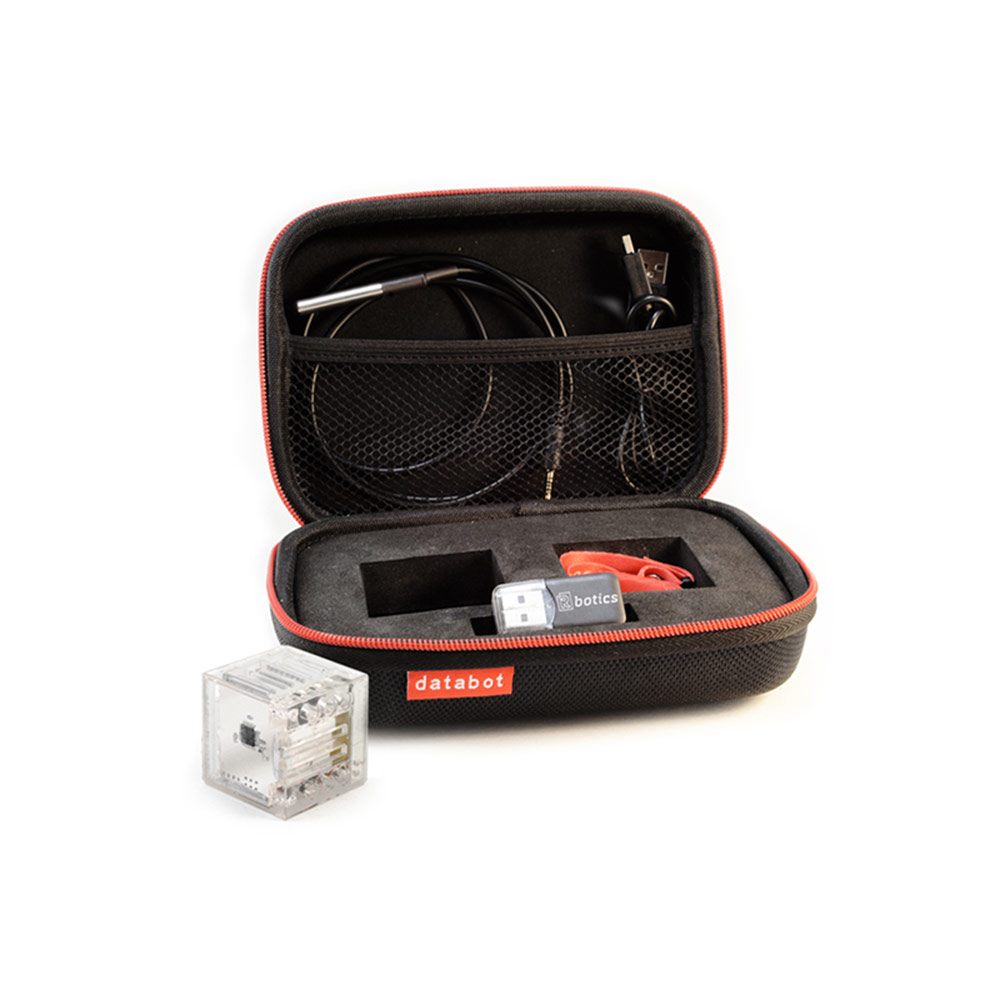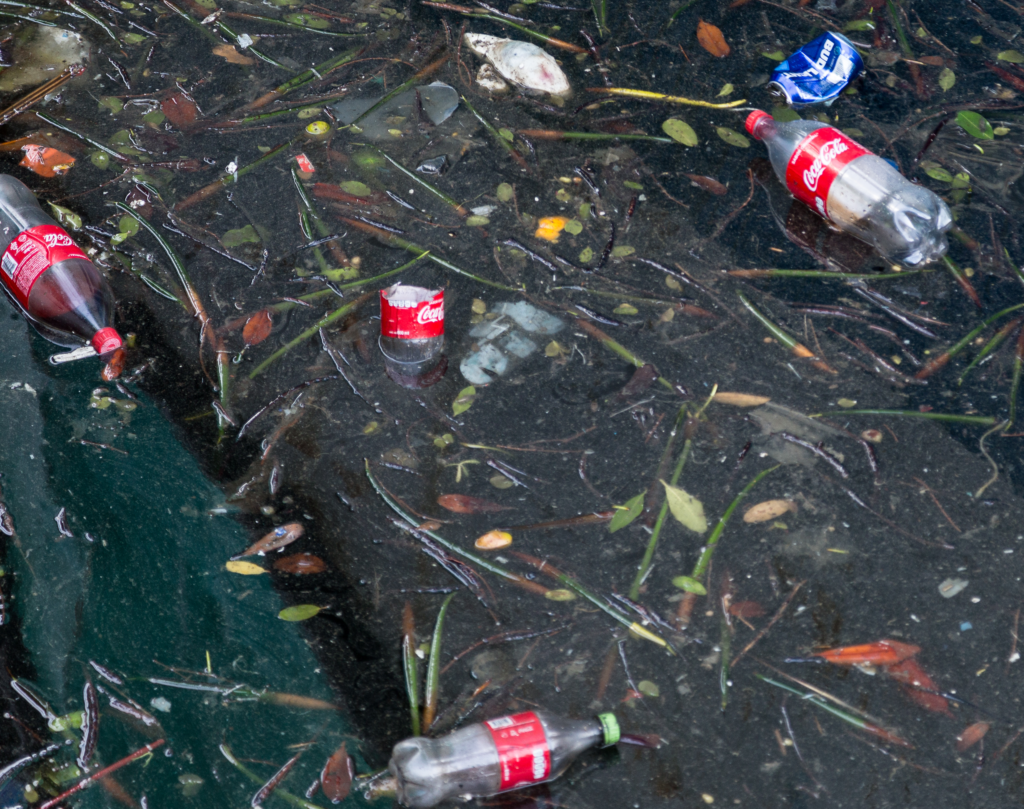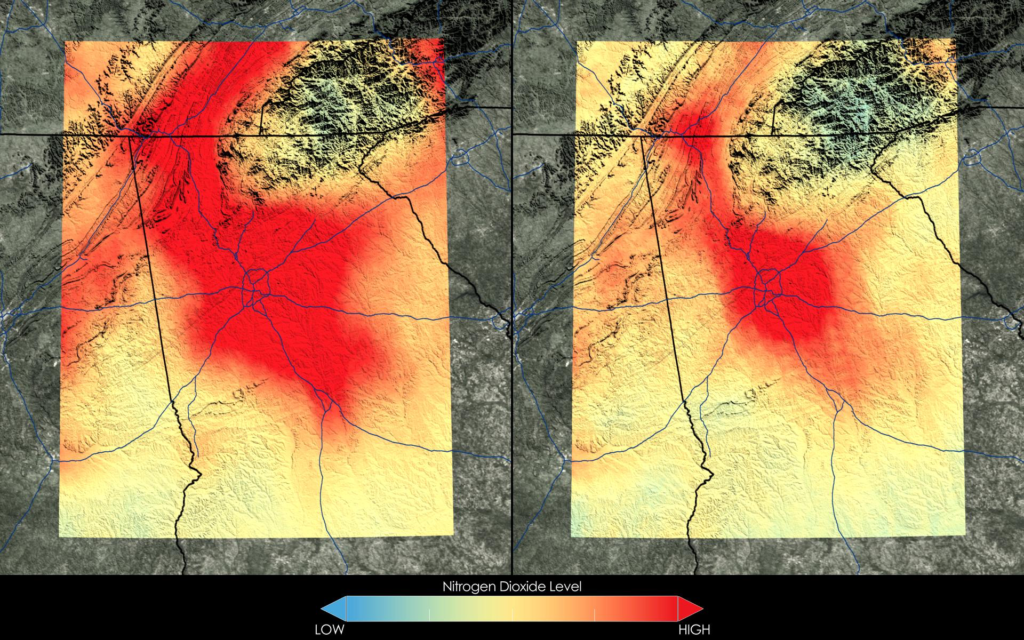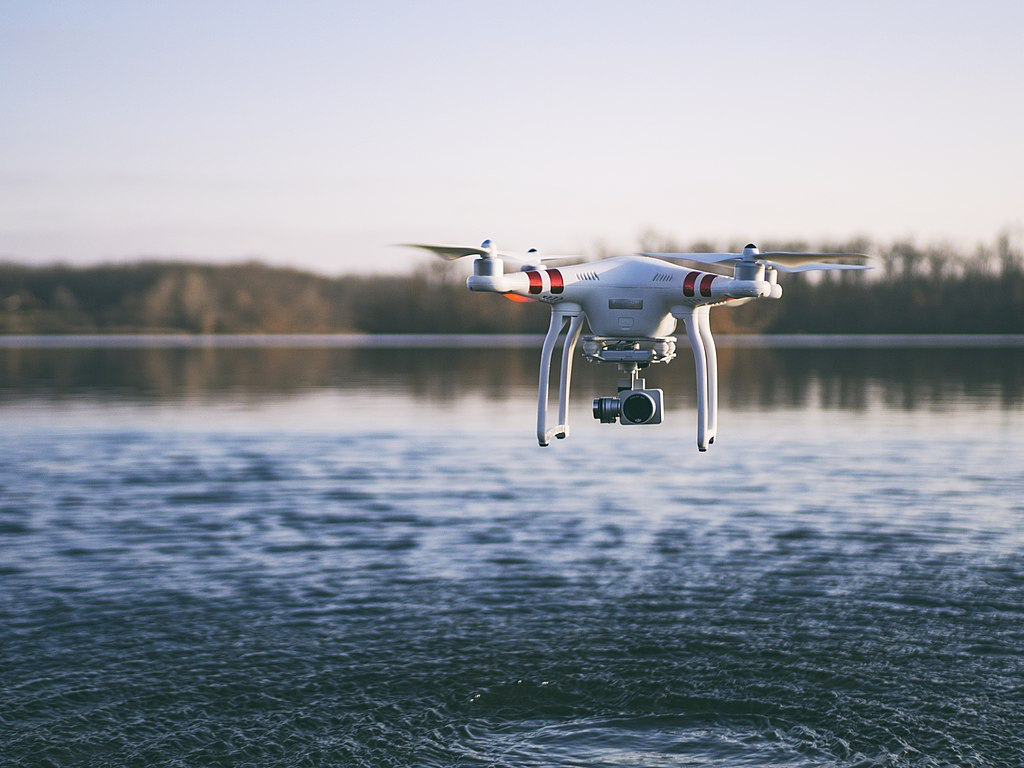 by Robert O. Grover
by Robert O. Grover
Educational Innovations is delighted to introduce the databot™. This little cube may be small, but it’s a fantastically powerful tool for all kinds of scientific research.
In this blog we have highlighted some of the awesome ideas folks have submitted for how they would use the databot™. So relax and scroll through a few pages of magnificent ideas from teachers and STEM lovers like you! As you read, ask yourself, “What might I do with my own databot™?”
 databot™ + Rockets = WOW!
databot™ + Rockets = WOW!
Incredible ideas from rocket lovers everywhere!
IDEA 1: Install as a payload in high power model rocket designs in order to gather data from each flight, so that you may understand the effects of different rocket designs, as well as study different atmospheric temperatures and pressures to better understand what conditions the rocket is flying in and be able to predict future outcomes.
America’s largest and oldest rocketry organization, the National Association of Rocketry, does a remarkable job of promoting safety, education, and the advancement of technology in the hobby of space modeling. If you enjoy spectacular events where large scale rockets fire into the heavens, look for a local chapter on their website.

IDEA 2: Create software in Python to analyze the data from the databot™ for high-power rocket launch profiles. This could become the standard for competition tracking.
A number of Career and Technology (CTE) educators have inquired about using data collected in databot™ experiments to create advanced challenges for their students. Using the Python programming language to analyze and present results is a fantastic idea – and a very real-world use!
IDEA 3: Use it as a telemetry device in the payload bay of a rocket. Attach its own parachute and harness, so that at apogee it can be released to collect all available environmental data it would be capable of. I’m sure more kids would try to catch the ‘satellite’ databot™ rather than the actual rocket that deployed it.
 IDEA 4: Based on what I’ve read, it would be cool to use the gyroscope, accelerometer, and altimeter for tests involving model rockets and maybe collecting data on movement.
IDEA 4: Based on what I’ve read, it would be cool to use the gyroscope, accelerometer, and altimeter for tests involving model rockets and maybe collecting data on movement.
IDEA 5: Use the databot™ to create an ultra-compact avionics bay for a level-1 high-power rocket. I’ll be going for my level 1 certification this summer and would like to include this system in my rocket for data collection and analysis. I may also include arduino and/or raspberry pi components and compare their measurements.
IDEA 6: Use the databot™ as a payload for amateur aerospace scale prototype vehicles! Integrated with drones, rocketry, and high altitude aero stats.
 IDEA 7: I build model rockets and make my own rocket engines. For years I’ve teamed up with schools and science teachers to launch rockets with payload cameras and different kinds of measurement devices. A device like this would be a game changer! The sky is literally the limit to what we could teach these kids using such a great learning tool. Using these in a payload could be a long term measurement of our changing climate. Putting this in the hands of the kids would open their minds to science.
IDEA 7: I build model rockets and make my own rocket engines. For years I’ve teamed up with schools and science teachers to launch rockets with payload cameras and different kinds of measurement devices. A device like this would be a game changer! The sky is literally the limit to what we could teach these kids using such a great learning tool. Using these in a payload could be a long term measurement of our changing climate. Putting this in the hands of the kids would open their minds to science.
Climate Research
The idea to use databot™ to capture environmental data and apply it to understanding and affecting climate change issues has been a popular area as well.
IDEA 8: Using this data it to check data outside, as in the world. Maybe we can use this data to help with climate change, to change our world into a better pristine environment!
IDEA 9: See how databots™ compare to current weather sensors in terms of weather and climate modeling.

IDEA 10: If databots™ were used by enough people, we might actually start to take action against climate change. I think that putting them out in communities in live demonstrations is great thing. It would help people better relate to the scientists, engineers, and politicians who are trying to heal our planet. Connection and realization should be the focus of these demonstrations.

IDEA 11: I’d use it for children to collect data on the tropical environment and nature. They could then design sustainability measures to counter climate change!
Using databot™ to test for toxic fumes, dangerous environments, improve air quality, and help people in various ways has been a consistent theme among entries!
databot™ Saves the World!
IDEA 12: I would like to use Databot™ to expose students to the dangers of plastic waste to our environment. We can explore alternatives to plastic and weigh the pros and cons of plant based materials. They will use the design thinking process to research and submit ideas for replacing plastic packaging that we use everyday.

IDEA 13: I would utilize the databot™ to help the visually impaired by adding the cube to their walking sticks. This way, they would be able to hear what is in front of them as well as feel it.
IDEA 14: We can use it to measure and find a frequency that helps a student to feel safe and calm. Finding the average frequency that increases the feeling of safety and calmness would lead to students feeling less stress.
IDEA 15: I would love to use a databot™ to monitor water conditions in our school’s Nature Center pond. This pond gets its water from local run-off rather than a natural stream. Monitoring the pollution levels would be a good lesson for students about how humans impact our environment.
IDEA 16: I would love to integrate the databot™ in my Comp Sci final project where students have to create a custom controller and software solution to help someone with a disability better interact with technology or practice a skill.
 IDEA 17: Databot™ could be used by students to take air quality measurements of their homes. The information can be brought back to school. The data can be displayed using Google maps to create “air quality maps” of the community. Areas with high concentrations of CO2 can be marked in red. Those with average reading can be marked yellow. Those with excellent readings can be marked in green. These maps can be displayed in the media center. Students can also discuss how to make changes in order to improve the readings in their own homes. This is an application of hands-on science that students of any age can enjoy.
IDEA 17: Databot™ could be used by students to take air quality measurements of their homes. The information can be brought back to school. The data can be displayed using Google maps to create “air quality maps” of the community. Areas with high concentrations of CO2 can be marked in red. Those with average reading can be marked yellow. Those with excellent readings can be marked in green. These maps can be displayed in the media center. Students can also discuss how to make changes in order to improve the readings in their own homes. This is an application of hands-on science that students of any age can enjoy.
Drones Drones Drones!

One of the biggest response categories has been using databot™ on drones! Not surprisingly, as Unmanned Aerial Vehicles (UAV) have become ubiquitous crossing into nearly every industry imaginable. Also, it seems that people are just naturally drawn to drones – maybe it is the lure of the freedom of flight,maybe it’s the merging of man and machine in one high speed FPV racing quad, and maybe it’s just we humans love our technology.
IDEA 18: I would like to use it to monitor drone activity in a flight.
IDEA 19: I would use these with my after-school program where we teach about how electronics work, build drones, and how to become engineers of our future.

IDEA 20: With all the talk that airplanes leaving long and expanding contrails are actually leaving a chemtrail, I think it would be interesting to study the air quality before and after one of the events. Also, I would possibly fly my drone through and test the trail itself.
IDEA 21: I teach aeronautics and space science. I’d love to set up experiments where we mount the sensor package on our drone to obtain atmospheric data at different altitudes, and also in different regional microclimates.
IDEA 22: Use it with a drone and trail camera to document conditions during wildlife observations without human intrusion.

IDEA 23: Program databot™ to various parameters to simulate data maps focused on how various species of animals perceive life and the ways environmental factors affect their behavior. This could be achieved by using drones or other mobile gadgets, or attaching databots™ to animals. It could make an interesting science project for environmental students who seek to investigate the pros and cons of human technology that affect nature
IDEA 24: Strap one to a racing drone and perform high speed air crashes.
IDEA 25: Using the many sensors on the databot™, I plan to create an autonomous delivery drone to automate simple deliveries on university campuses.
Conclusion
Wow – and that’s only 25 examples. I’m inspired and amazed by the flow of creativity and positive energy that run as a common thread through all of these entries.
I recently made a new friend in North Carolina. I just read an article he had written about taking a “fast” from your smart device and reconnecting with the positive energy around us. He was totally right – it can be tough to stay positive on a daily basis when news headlines pop up on my phone every 15 minutes.
However, I think databot™ may be restoring my faith in the human spirit as students, teachers, hobbyists, and professionals all share their ideas about how we can work together to make a better world with positive intentions and good technology.
Final word? Here’s the latest submission posted just a few minutes ago.
IDEA 26: I want to learn. I want to improve the planet. I’m studying small electronics at a local school. I plan to work this summer so I can study next year as well.

About the Author
Robert O. Grover is a proponent of STEAM education and educational technology that helps turn today’s students into tomorrow’s thoughtful leaders.
References
Brian Federal, LinkedIn, July 17, 2016; Take the 7 Day News Fast https://www.linkedin.com/pulse/time-turn-off-network-news-circus-brian-federal/
Wikimedia Commons Image Credits:
https://commons.wikimedia.org/wiki/File:Level_3_high_power_rocket_at_launch_pad.jpg
https://commons.wikimedia.org/wiki/File:M_powered_rocket.jpg
https://commons.wikimedia.org/wiki/File:High_power_rocket_ready_for_flight.JPG
https://commons.wikimedia.org/wiki/File:Glacial_lakes,_Bhutan.jpg
https://upload.wikimedia.org/wikipedia/commons/c/c5/ISS-46_January_2016_United_States_blizzard_seen_from_ISS.jpg
https://upload.wikimedia.org/wikipedia/commons/b/b2/Coca_Cola_plastic_bottles.jpg
https://upload.wikimedia.org/wikipedia/commons/7/78/Recycling.JPG
https://upload.wikimedia.org/wikipedia/commons/4/4d/U.S._Air_Quality_Improvement_-_Atlanta_%2814505963062%29.jpg
https://commons.wikimedia.org/wiki/Category:Quadrotors#/media/File:Flying_DJI_Mavic_Pro_3.jpg
https://commons.wikimedia.org/wiki/Category:Quadrotors#/media/File:Nabil_kissing_his_Drone.jpg
https://commons.wikimedia.org/wiki/Category:Quadrotors#/media/File:Mini_Quadrotor_and_four_electic_Micro_DC_Motors.jpg
https://commons.wikimedia.org/wiki/Category:Quadrotors#/media/File:Aaron_Burden_2017-02-27_(Unsplash).jpg
https://commons.wikimedia.org/wiki/Earth#/media/File:Earth_Western_Hemisphere.jpg

